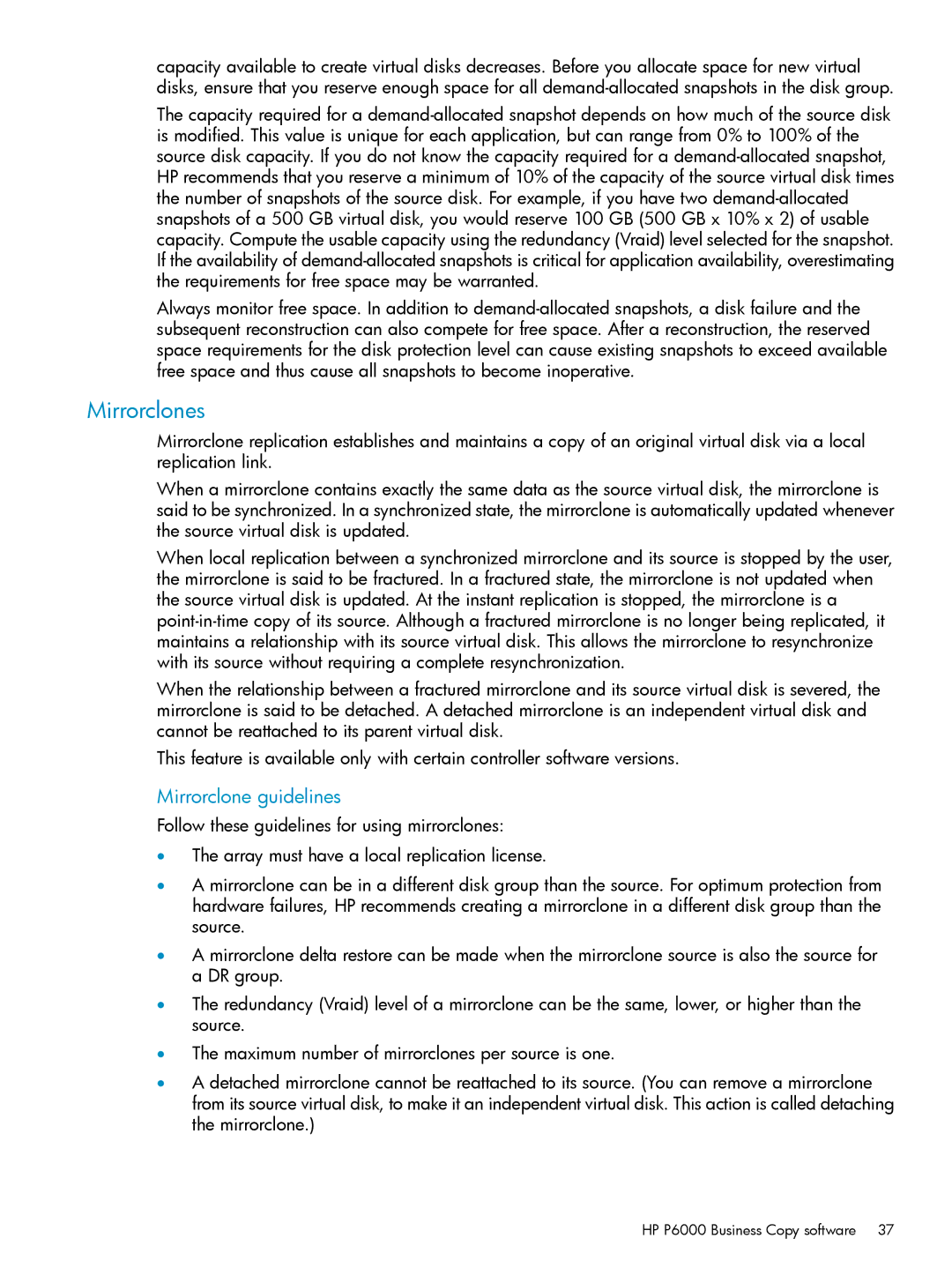capacity available to create virtual disks decreases. Before you allocate space for new virtual disks, ensure that you reserve enough space for all
The capacity required for a
Always monitor free space. In addition to
Mirrorclones
Mirrorclone replication establishes and maintains a copy of an original virtual disk via a local replication link.
When a mirrorclone contains exactly the same data as the source virtual disk, the mirrorclone is said to be synchronized. In a synchronized state, the mirrorclone is automatically updated whenever the source virtual disk is updated.
When local replication between a synchronized mirrorclone and its source is stopped by the user, the mirrorclone is said to be fractured. In a fractured state, the mirrorclone is not updated when the source virtual disk is updated. At the instant replication is stopped, the mirrorclone is a
When the relationship between a fractured mirrorclone and its source virtual disk is severed, the mirrorclone is said to be detached. A detached mirrorclone is an independent virtual disk and cannot be reattached to its parent virtual disk.
This feature is available only with certain controller software versions.
Mirrorclone guidelines
Follow these guidelines for using mirrorclones:
•The array must have a local replication license.
•A mirrorclone can be in a different disk group than the source. For optimum protection from hardware failures, HP recommends creating a mirrorclone in a different disk group than the source.
•A mirrorclone delta restore can be made when the mirrorclone source is also the source for a DR group.
•The redundancy (Vraid) level of a mirrorclone can be the same, lower, or higher than the source.
•The maximum number of mirrorclones per source is one.
•A detached mirrorclone cannot be reattached to its source. (You can remove a mirrorclone from its source virtual disk, to make it an independent virtual disk. This action is called detaching the mirrorclone.)
HP P6000 Business Copy software 37
